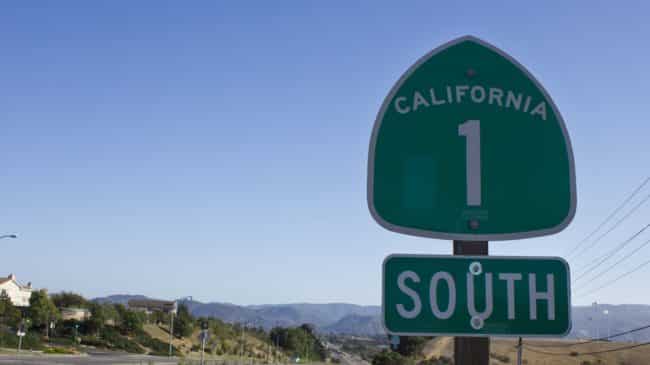For drivers, California’s bumpy roadways can seem like one giant pothole. So commuters should welcome Gov. Gavin Newsom’s proposed 2020-2021 budget, which smartly prioritizes roadway maintenance, congestion reduction, and key trade corridors.
There’s no way to sugarcoat it: California’s infrastructure is in bad shape. The state has put off basic maintenance and repairs and there are now more deferred needs in the state’s transportation system than in any other area of infrastructure.
The majority of California’s highway system was built between the 1950s and the 1970s, but the state has failed to properly maintain much of it. Despite its high gas taxes and available resources, California’s pavement condition ranks in the bottom 10 in the nation in three of the four categories examined in Reason Foundation’s Annual Highway Report. This poor roadway quality also affects safety. The state has the fourth-highest rural fatality rate in the country, in part, because of its high percentage of narrow, curvy roads.
For years, California has prioritized wants over needs. The high-speed rail boondoggle being built in the Central Valley is a good illustration of this. The state has spent taxpayers’ money on shiny new capital projects that provide ribbon-cutting photo-ops for politicians, rather than performing basic road maintenance. Similarly, it’s diverted vehicle registration fees to mass transit projects and recreational trails programs.
Newsom’s budget is a welcome change. The governor would be wise to push the state to catch up on maintenance, cut costs, and properly prioritize projects to best allocate the money.
The state can set an aggressive timeline for repaving highways— fixing the worst roads within five years and placing all projects on a 10-year maintenance cycle. For repaving projects, the state can use laser equipment to measure the international roughness index (road bumpiness) and then prioritize the worst, most-used roads first.
For major reconstruction and widening projects, such as rebuilding SR 74 between Orange and Riverside counties, and adding express toll lanes to I-5, I-405 and SR 91, the state needs to adopt a quantitative-based project ranking system.
The current system uses benefit/cost analysis to evaluate projects on six criteria: time savings for travelers, vehicle operating cost savings, safety cost savings, lowered air pollution emissions, construction costs, and operations and maintenance costs. However, the state has been criticized by the Federal Highway Administration for failing to use travel demand data, making its results inaccurate in the real world.
California should model its project evaluation system after two leading states, North Carolina and Virginia. The North Carolina model distributes funding to three categories: transportation needs, regional impact, and statewide mobility. Cost/benefit analysis makes up 50-to-100 percent of the scoring process while rankings from metropolitan planning organizations or regional divisions, in California’s case the Southern California Association of Governments or CalTrans’ divisions comprise the rest. Politicians have no direct impact, eliminating some political gamesmanship.
The Virginia model uses a similar scoring process — focusing on safety, congestion mitigation, accessibility, environmental quality, economic development, and land-use metrics.
Both states allow regions to modify their criteria. Large urban regions can prioritize the reduction of traffic congestion, while rural regions can increase the weight of economic development. In California, this could mean Los Angeles and Orange County select projects that best reduce highway gridlock, while the outskirts of Riverside County put more value on projects that boost economic development.
The state could take other steps to improve its efficiency. It costs anywhere from two-to-10 times more to build a highway in California than in other states. Everything from high land costs to union rules to earthquake retrofitting plays a role, but the biggest problem is inefficiency. Reducing Caltrans staff by 20 percent to match staffing levels at other state transportation departments would be a major improvement. Additionally, enabling design-build — where the government awards a single contract for both the design and construction of a highway project to reduce construction time and costs — and using more public-private partnerships would also help.
It’s good to see Gov. Newsom putting a spotlight on road maintenance. It’ll be even better if the state finally follows through.

